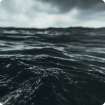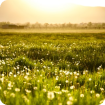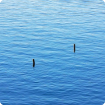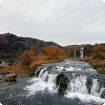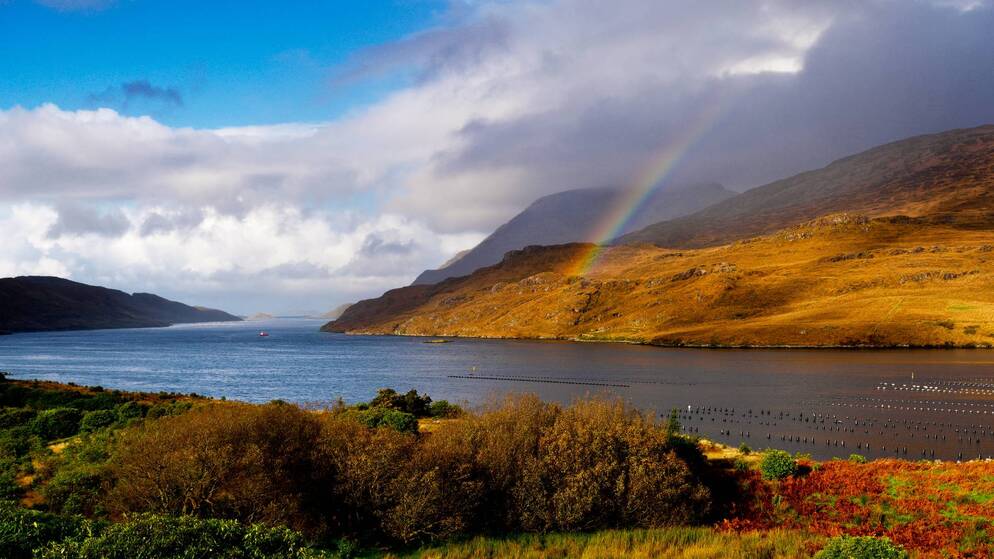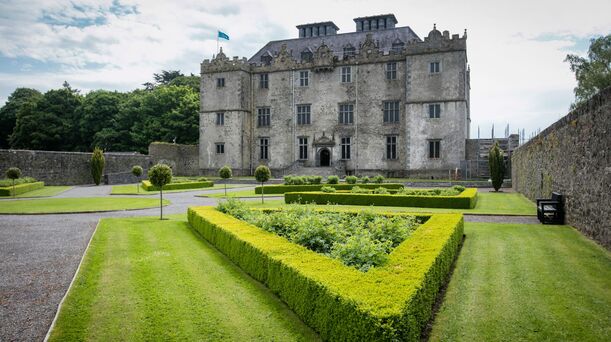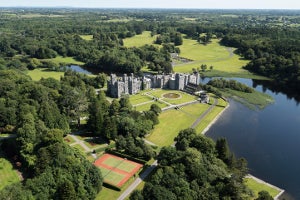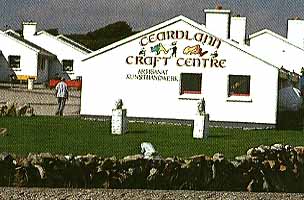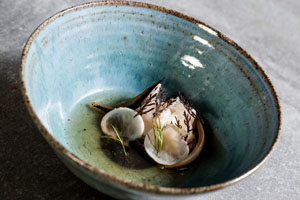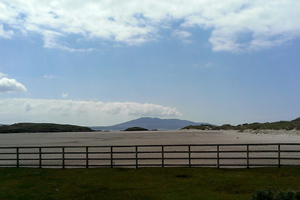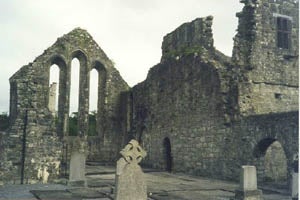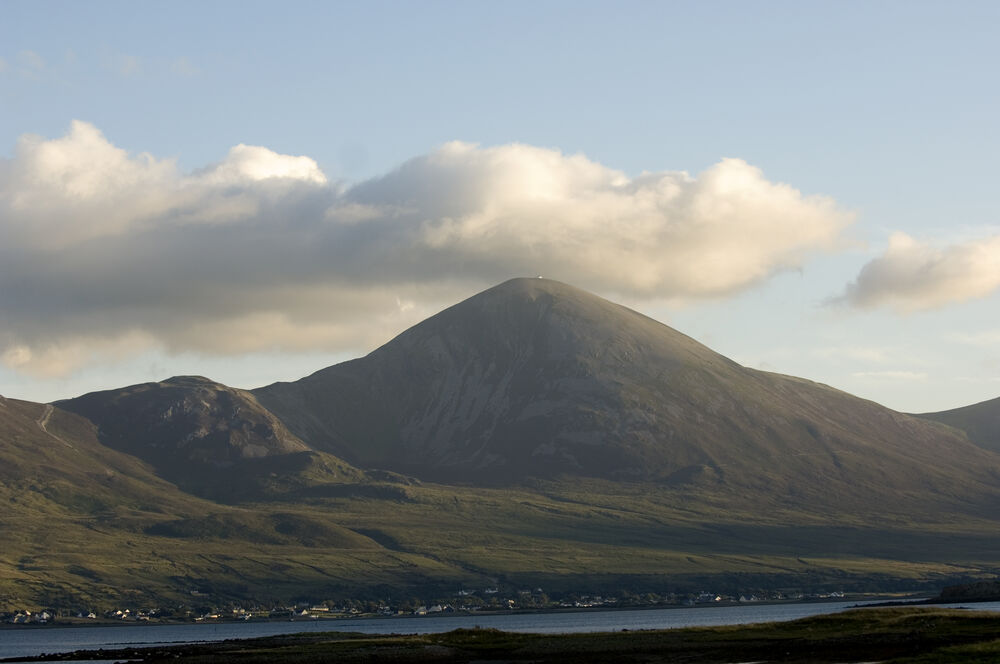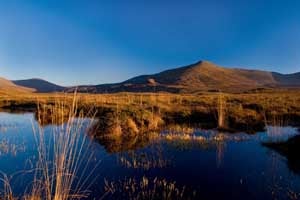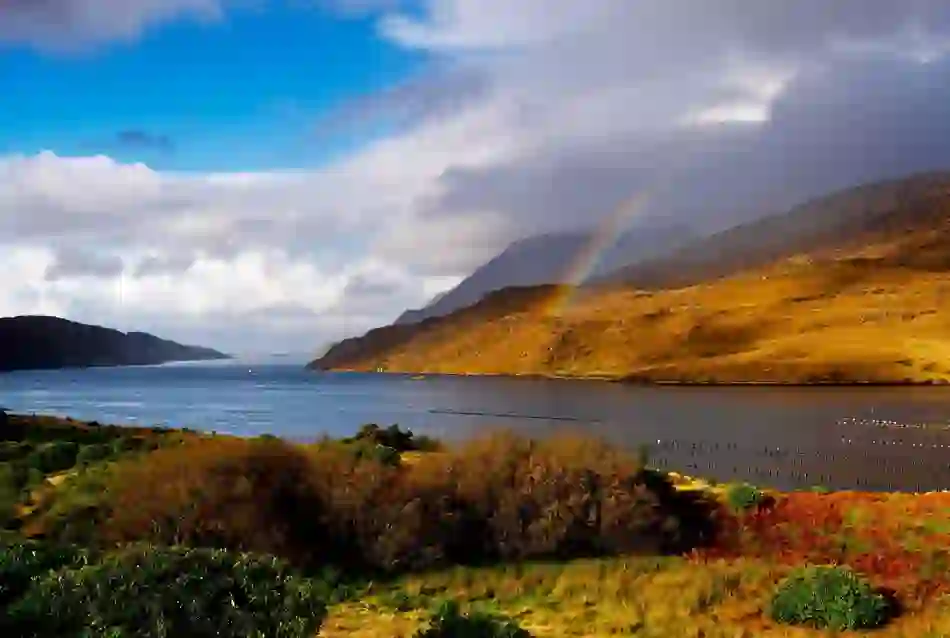
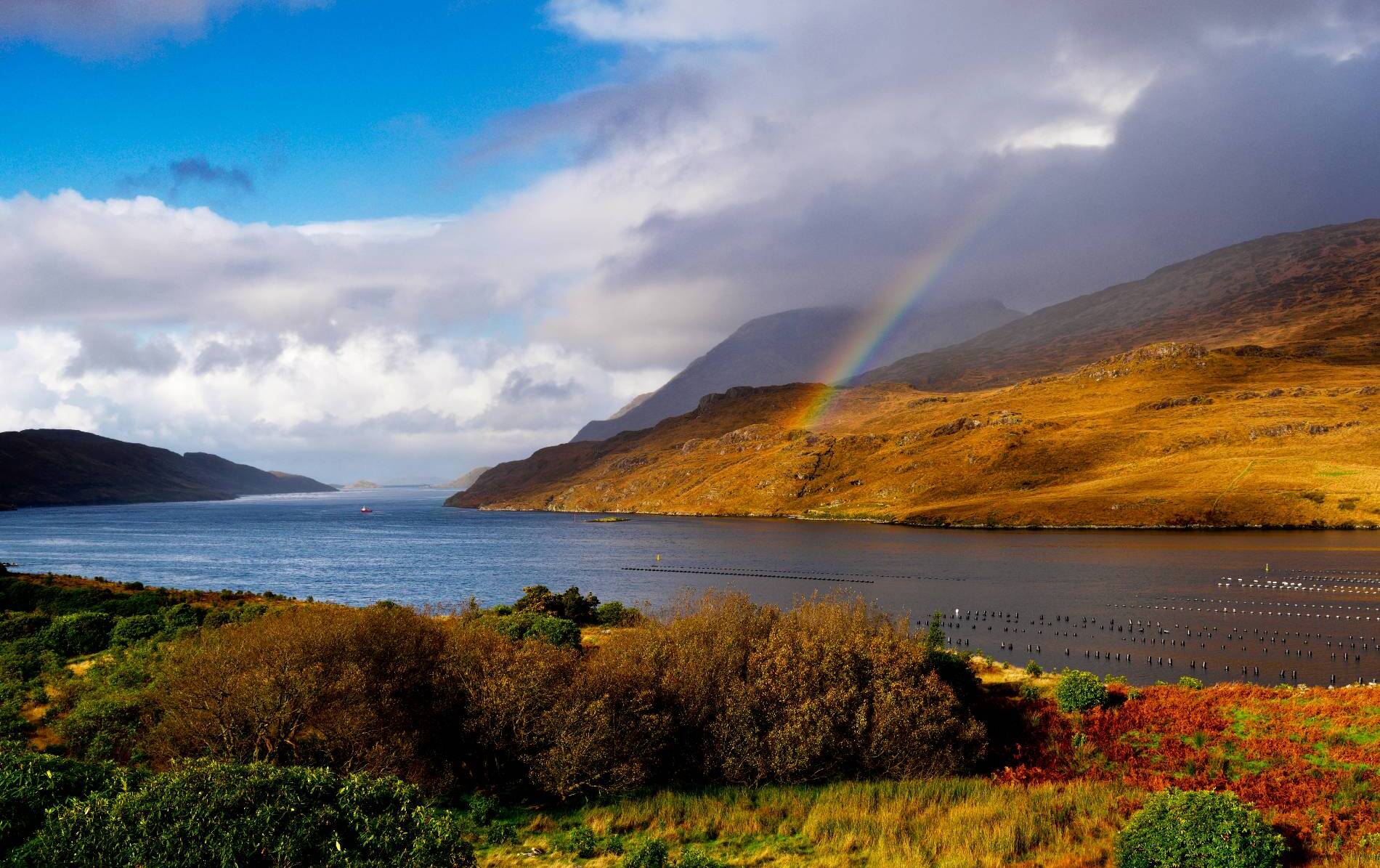
Killary Harbour
Killary Harbour
County Galway & County Mayo
The glacial fjord of Killary acts as a natural border between the two bastions of traditional Ireland: County Mayo and County Galway. The flooded valley often plays host to a bevy of marine life including otters, both grey and harbour seals, even dolphins and sharks have been spotted enjoying the fjord.
L-R: Killary Harbour, County Galway and County Mayo
The view of Killary from the shore is certainly a spectacular one, but taking to the water here gives you a whole new perspective. Hop on board the Killary Fjord Boat Tours for a 90-minute sightseeing tour of the stunning north Connemara National Park.

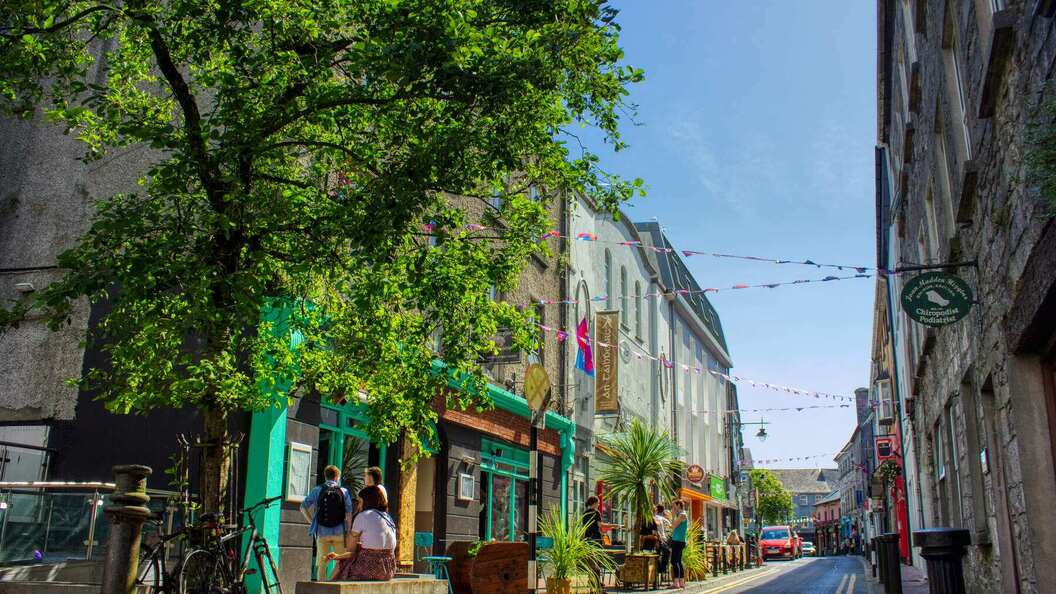
Galway city
Bustling streets filled with character
Galway’s food scene includes incredible cafés, bistros and fine-dining restaurants that are kicking the culinary ball right out of the park.
Back on land is the picturesque village of Leenane. It sits at the mouth of Killary Harbour, and is almost dwarfed by the Connemara Mountains that surround. Leenane became famous in 1989 when it starred in the film adaption of John B Keane's play The Field. Gaynor’s pub was the spot where much of the action took place on film, and in real life the staff serves up great pints and tasty toasted sandwiches, as well as a fair bit of chat on the side!


Killary Harbour, County Galway and County Mayo
Offering sublime photo opportunities, the Delphi Valley is a seven-minute drive from the harbour and boasts three spectacular lakes – Glencullen, Doolough and Finnlough – which run down to the Bundorragha River and into Killary Harbour. Meanwhile, the Maam Valley to the east of Killary is dense with ancient woods, boasts a multitude of prehistoric sites and is overlooked by the Maumturk Mountains. As the locals say, Killary is a place of contrasts: outdoor pursuits, Hollywood moments and ancient history. It’s a place you won’t want to leave!


Ballina, County Mayo
A wilderness of attractions
From Clew Bay to Westport, County Mayo is the brilliant and beautiful heart of the Wild Atlantic Way
A local to the area is the Connemara pony – the only horse breed native to Ireland. These sweet little ponies are rumoured to have arrived on our shores when the Spanish Armada crashed off Connemara’s coast during the 16th century. Their ancestors are said to be the Arab stallions that swam to shore from the wrecked ships and settled into their new life in Ireland.
These days the ponies are a gorgeous form of transport and take you across the beaches and bogs of Connemara. When the tide is low, they'll wade out to the nearby islands of Finish, Mweenish and Omey. During the summer months, Omey Island hosts its unique beach-racing day. At low tide, head for the sound of cheers rising from the beachfront. To entertain you between race times, there’s plenty of music, dance, and food to be had. Just follow the road signs and the enthusiastic crowds… but when they announce the tide is rolling in again, be sure to follow those same crowds back onto dry land too, or you'll end up stranded.
Before returning to the Wild Atlantic Way route, you could drive half an hour to Westport in County Mayo. It’s the perfect place to embark on an outdoor adventure featuring everything from sacred mountains and stately homes to island-studded bays. The surrounding Partry Mountains are calling out to be climbed, and nearby rivers Erriff and Delphi are excellent for angling (ask locally about fishing permits or visit the official Government website for more information).
Galway and Mayo highlights
Don't miss these things to see and do!





